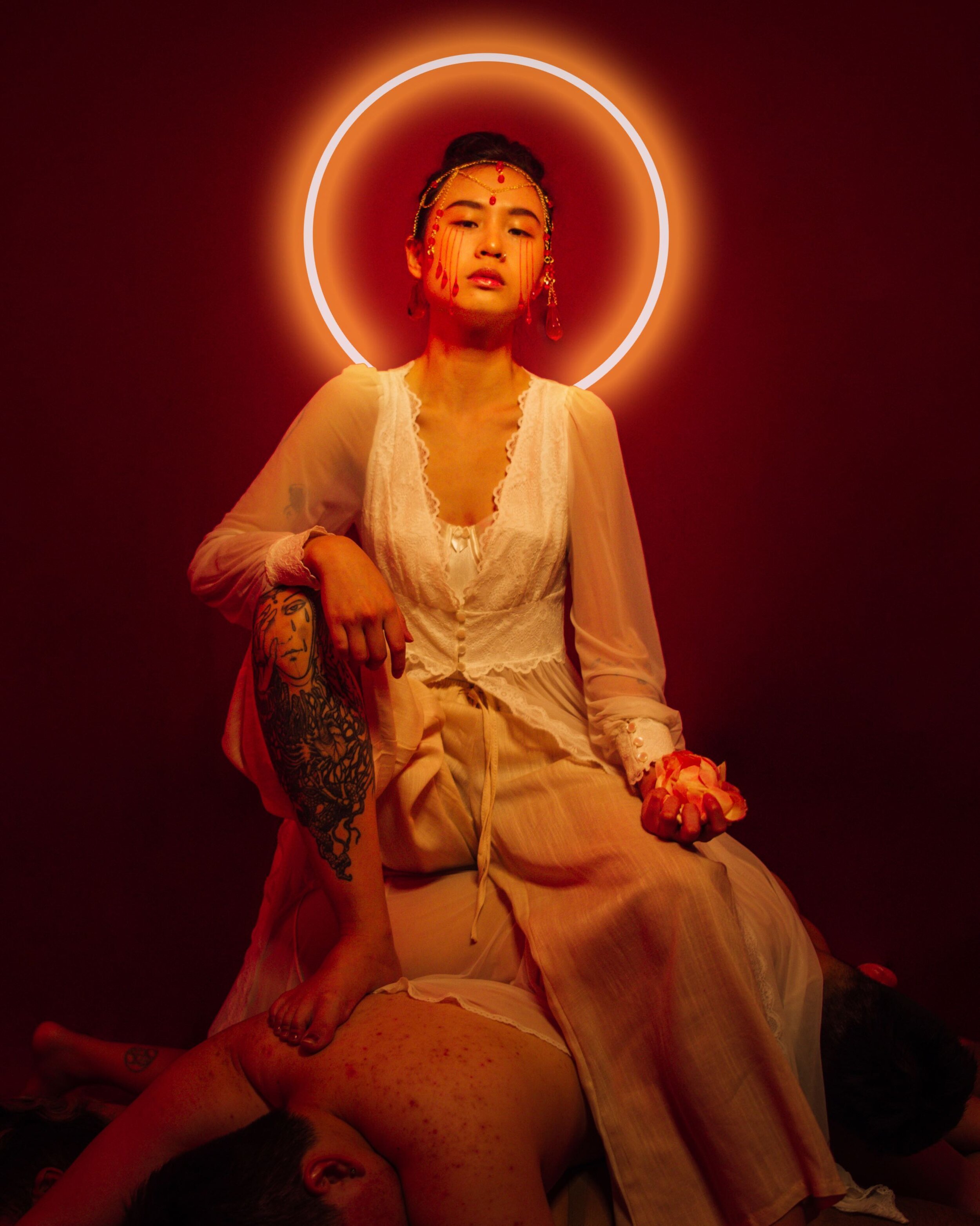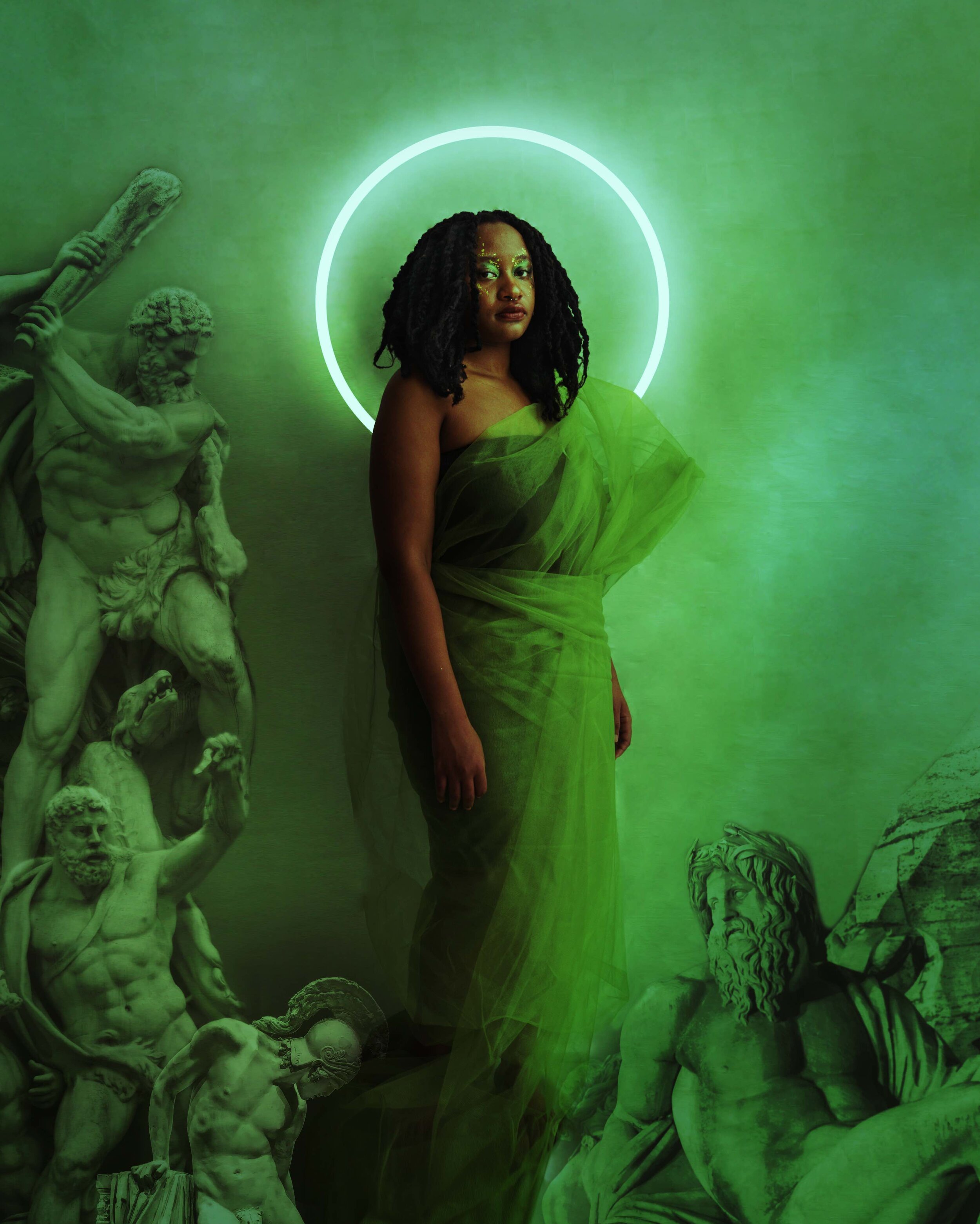Through the Lens: Catherhea Potjanaporn
The Malaysian Photographer on ‘Divine Retribution’
‘Through the Lens’ is a series that explores in detail images from fashion photographers in Southeast Asia, shining a light on their technical and creative processes.
Catherhea Potjanaporn-Teoh is a content creator and copywriter based in Petaling Jaya, Selangor. She began her photography journey in 2006 and focuses on contributing to a more inclusive media industry. People of colour as well as those who defy conventional beauty standards are often placed at the centre of her photographs.
In this conversation, Catherhea speaks about the driving force behind her ‘Divine Retribution’ photo series, and the team that made it all happen.
Catherhea Potjanaporn, ‘Divine Retribution: A Mother’s Rage’, 2020. Image courtesy of the photographer.
What subjects and elements are included in your usual practice?
I often photograph invisible bodies, the kind of people that are ignored by mainstream media, such as fat people, dark-skinned people, people with disabilities and people with visible skin conditions.
Could you describe this photo series?
‘Divine Retribution’ features women styled in goddess or warrior-esque outfits and strong stances and expressions.
What camera and lens did you use to shoot this?
It was shot with a Nikon D750 with the Sigma 24-35mm f/2 DG HSM Art Lens.
Catherhea Potjanaporn, ‘Divine Retribution: Wrath of Mercy’, 2020. Image courtesy of the photographer.
What was the concept behind it?
While bearing no relevance to the actual beliefs or world history, the likeness of these characters was adopted to pay homage to women and people who have endured sexual assault and/or domestic violence. The driving force for this theme came from both personal experiences and the wave of harrowing stories that women have shared across social media. I wanted to create a narrative where their feelings and trauma are validated. In a society with so much forced positivity, feelings of anger, hurt, fear, and frustration have been dismissed as "too much", "a mess", "unnecessary drama". I want survivors to feel seen, heard, and validated. In some ways, this is the revenge or justice that we have not been afforded.
“In a society with so much forced positivity, feelings of anger, hurt, fear, and frustration have been dismissed as “too much”, “a mess”, “unnecessary drama”. I want survivors to feel seen, heard, and validated. In some ways, this is the revenge or justice that we have not been afforded.”
Catherhea Potjanaporn, ‘Divine Retribution: Monster Misunderstood’, 2020. Image courtesy of the photographer.
Was this shoot a client-based project or was it for your personal portfolio?
‘Divine Retribution’ was for my personal portfolio. Listening to people's stories, and collaborating with them to create visuals that personally empower their individuality is something I love being able to do. I would be ecstatic if this is something people want to pay for!
Did you work with a team to create this? Who else was involved?
Teamwork makes the dream work! It would be impossible for me to accomplish something like this on my own.
Afie Rohim was the make-up artist and prop-maker for ‘Wrath of Mercy’ and ‘Monster Misunderstood’. She has a background in fashion and has amazingly creative make-up skills, coupled with a gift for making things. She handmade the strings of red bead tears and chain headdress for ‘Wrath of Mercy’, and styled the green dress in ‘Monster Misunderstood’ from a single piece of fabric.
Lith Ng Yee Leng was the talent for ‘Wrath of Mercy’. She is an artist who creates wonderfully eccentric statement works while strongly advocating for sex positivity and women's sexual health. Currently she also runs an adult pleasure products store at Erosu MY, and uses her platform to educate her audience on sexual health.
Hanizah Shahul Hamid was the prop maker for ‘A Mother's Rage’. With her personal style inspired by the queens of drag, there is no limit to what she can come up with. She has the capacity to make magic from things found at thrift stores. She managed to source an inexpensive yet fancy-looking machete, and made a gold skull crown from plastic deco and gold spray paint.
Shangkharee Nadarajan was the talent for ‘A Mother's Rage’. Even with all the obstacles she has faced in the industry as a plus-sized woman, Shangkharee continues to use her platform to showcase her best self and empower other dark-skinned Indian women like herself. While wearing many different hats and being an inspiration to a large number of followers, she also recently became an entrepreneur. She currently sells beautiful, affordable sarees in her recently launched Instagram store Sha & Raly.
Michelle Kudisai Mutangadura was the talent for ‘Monster Misunderstood’. From YouTube videos to self-care products and game design, she is a multi-disciplinary content creator with a strong focus on mental health and personal growth. Striving to destigmatise mental illnesses, she uses her platform to educate her audience about mental health and encourages them to spread awareness.
Are there any specific elements in this series that you would want people to pay attention to, and why?
I want people to focus on the way the talents are standing or seated, and looking at the viewer, as well as the elements surrounding them. It is a story where we listen and let them speak.
Which fashion photographer’s work inspires you most?
I do not consider myself to be a fashion photographer, so I am inspired not only by fashion photographers. And it is hard to pick one photographer when everyone is a unique visionary in their own way. The art direction in my work probably has bits and pieces of what I see from various photographers. Some of my local favourites include Amani Azlin, Vaneesha Krishnasamy, Annice Lyn, Annatasha Saifol, Daniel Adams, and TTFGA.



